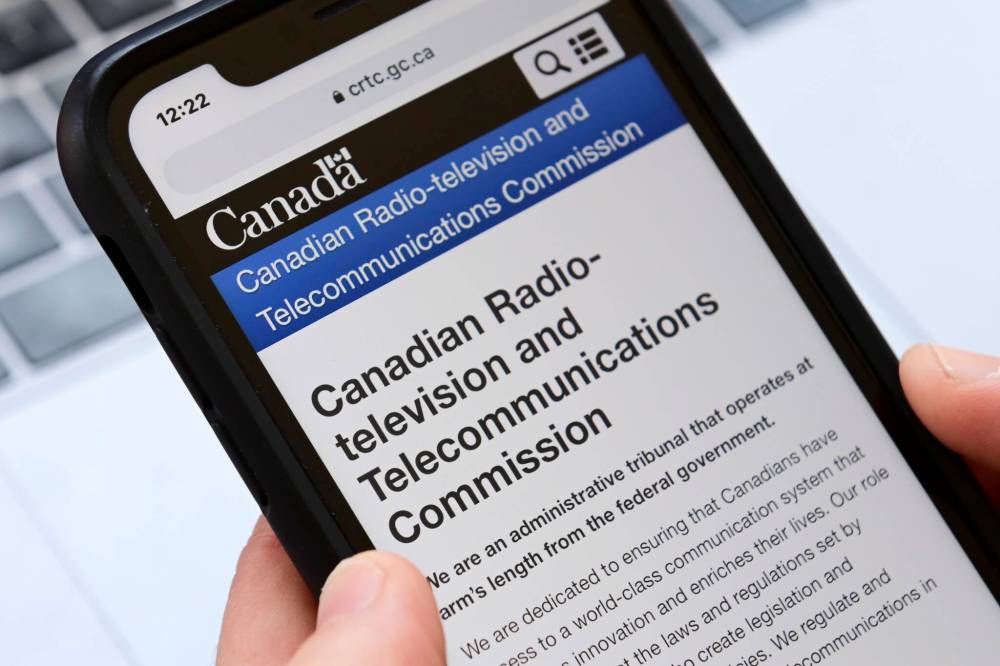Streaming services and a cost of doing business
Advertisement
Read this article for free:
or
Already have an account? Log in here »
To continue reading, please subscribe:
Monthly Digital Subscription
$0 for the first 4 weeks*
- Enjoy unlimited reading on winnipegfreepress.com
- Read the E-Edition, our digital replica newspaper
- Access News Break, our award-winning app
- Play interactive puzzles
*No charge for 4 weeks then price increases to the regular rate of $19.00 plus GST every four weeks. Offer available to new and qualified returning subscribers only. Cancel any time.
Monthly Digital Subscription
$4.75/week*
- Enjoy unlimited reading on winnipegfreepress.com
- Read the E-Edition, our digital replica newspaper
- Access News Break, our award-winning app
- Play interactive puzzles
*Billed as $19 plus GST every four weeks. Cancel any time.
To continue reading, please subscribe:
Add Free Press access to your Brandon Sun subscription for only an additional
$1 for the first 4 weeks*
*Your next subscription payment will increase by $1.00 and you will be charged $16.99 plus GST for four weeks. After four weeks, your payment will increase to $23.99 plus GST every four weeks.
Read unlimited articles for free today:
or
Already have an account? Log in here »
The battle between Canadian media and the streaming services of the world goes on.
The latest front of that conflict is playing out at the Federal Court of Appeal in Toronto, which is hearing consolidated appeals by several streamers over efforts by the Canadian Radio-television and Telecommunications Commission (CRTC) to force those streamers to fund Canadian content.
There is certainly a case to be made that they should. Too often, web-based outlets are overlooked on the regulation front, as regulators or lawmakers may struggle to understand how to fit them into current moulds.

FILE
The online social-media pages of the Canadian Radio-television and Telecommunications Commission (CRTC).
But the logic is simple: if a streamer functions as a broadcaster, and if its library is being broadcast to Canadian users, then it must adhere to Canadian expectations regarding contributing to that content and giving it the designated amount of playtime.
Apple, Amazon and Spotify are fighting the CRTC’s order, which requires streamers with Canadian revenues over $25 million (and that are not affiliated with a Canadian broadcaster) to pay five per cent of that revenue toward funding a broad range of Canadian content, including local TV news.
It is not unfair to expect streaming services to customize its dealings country-by-country in this fashion — they already do it.
For example, Netflix’s library of available titles is different in Canada than it is in the U.S., and further abroad, depending on what they have streaming licences for, and what they believe will appeal to each market. They are already making efforts to appeal to the Canadian market in their content-curation decisions, as do other streamers. Therefore, they can be expected to follow CanCon rules the same way every traditional broadcaster has done.
But, speaking of Netflix, the CRTC is also at risk of overplaying its hand.
According to the Canadian Press, one of the parties fighting the CRTC order is Motion Picture Association-Canada, which represents Netflix and Paramount.
They are challenging the CRTC order respective to contributing to local news, and there they have a point. While Spotify — which hosts many news and other current-events-related podcasts — has a stake in the news game, Netflix and Paramount aren’t really in that business, so it’s a weak argument to claim they should be funding it.
That said, there are weak arguments to be found on both sides: Apple is claiming the five per cent is not equitable, comparing itself to radio stations, which must pay only 0.5 per cent. That claim is a little rich, though not as rich as Apple; radio stations, at least the traditional, terrestrial kind, only has a fraction of the reach and revenue-generating power as Apple does, so it’s fair enough at a glance that the larger entity pay more of a share, given its greater exposure. (On this point, the Canadian Press’s coverage points out that the CRTC “requires large English-language broadcasters to contribute 30 per cent of revenues to Canadian programming,” far more than is expected currently of streamers.)
The streamers appealing to the court have submitted a lengthy list of reasons why they shouldn’t have to pay. That is to be expected. It suits streamers to maintain the idea that they are not the same as traditional broadcasters and so should get to operate under a separate set of rules, preferably ones beneficial to their bottom line.
That’s why the CRTC’s order is, while flawed, important. It is the commission’s role, in part, to ensure purveyors of audio-visual media in Canada — on all platforms — meet their obligations to support Canadian content.
It’s just the cost of doing business.




